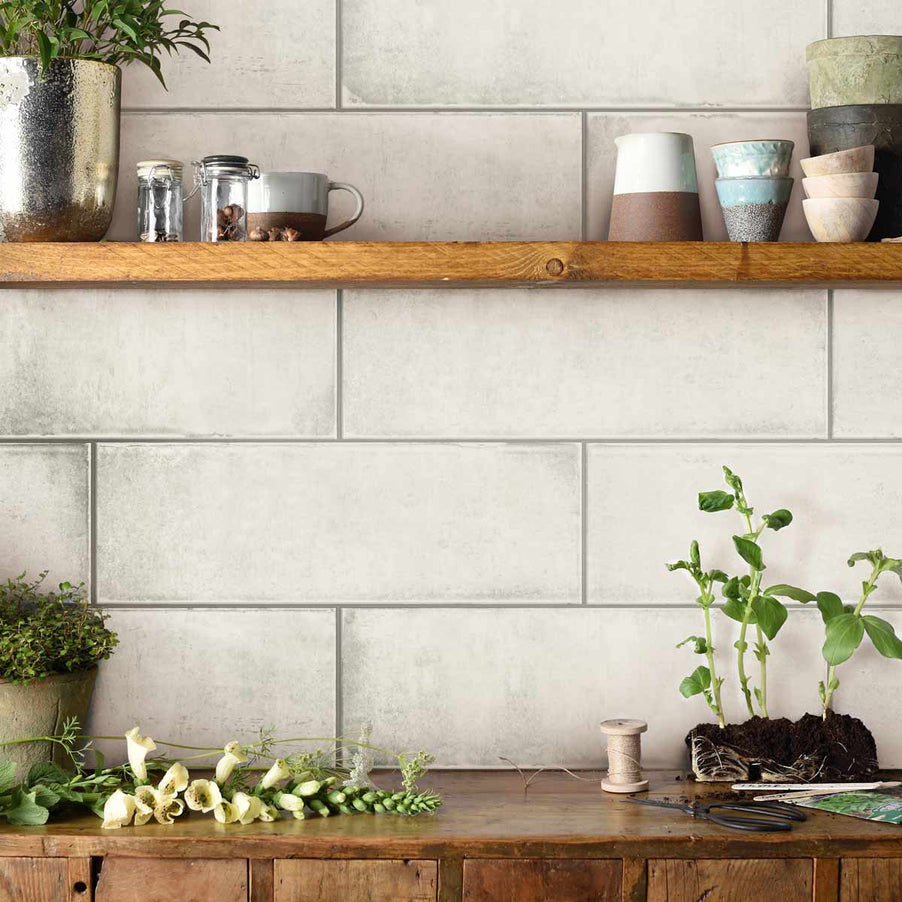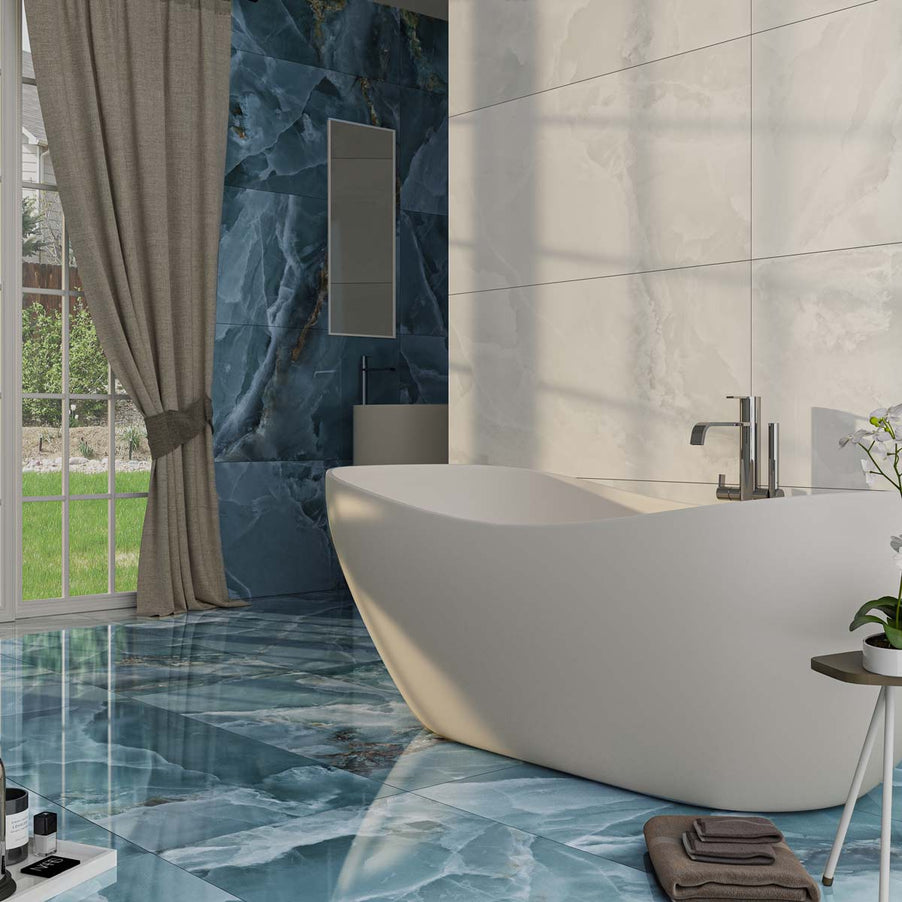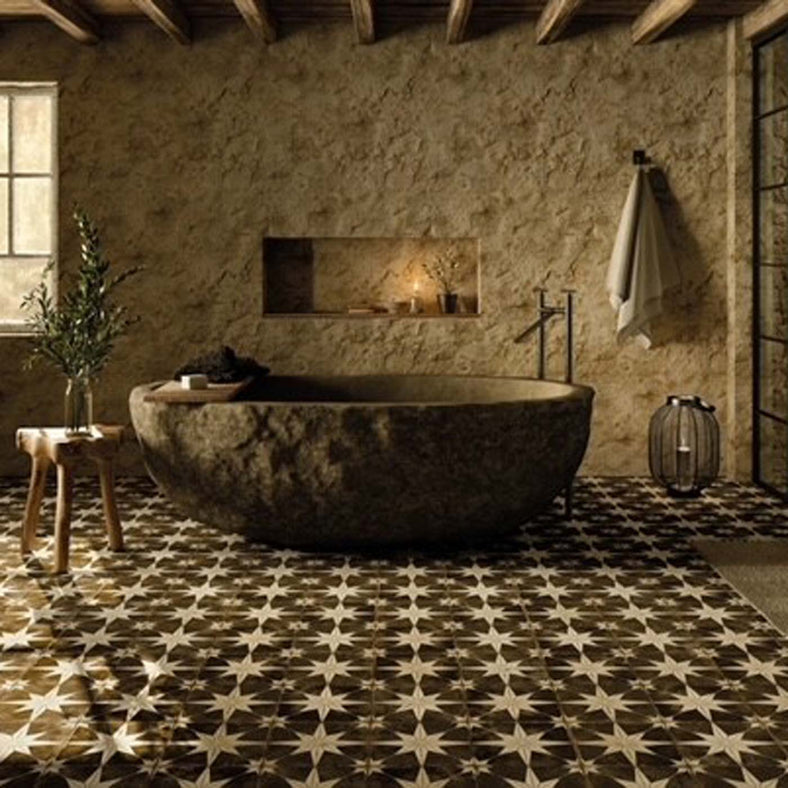Application
Application form

When discussing tiles, it's important to recognise that they come in a variety of finishes, each with their distinct appearance and style. The three primary types are:
Gloss tiles, or glossy tiles, boast a striking, shiny finish achieved by applying a glaze during production. They are available in a wide array of colours and styles, suitable for creating a sleek and modern ambiance in any room. An advantage of gloss tiles is how easy they are to clean and maintain. But, they tend to show fingerprints and smudges more easily, much like a mirror or reflective shiny surface.
Beautiful and rustic, these aged white brick tiles give a spacious feel to any project due to their gloss finish.
Polished tiles attain their glossy finish through a polishing process, involving the use of a special polishing compound and a polishing wheel. The result is a high-gloss tile with a remarkable level of reflectivity. These tiles are often reserved for high-end applications, like luxury bathrooms and kitchens. Polished tiles are also commonly found in public spaces such as shopping centers and office buildings. Although they are typically more expensive than non-polished tiles, they introduce an element of elegance to any room with their beautiful shimmer and reflective surface.
Bold, almost ocean-esque patterns draw the eye in this gorgeously modern bathroom. See how these polished tiles beautifully reflect light and add to the tranquil ambiance.
It's important to note that gloss and polished tiles, while similar, undergo different production methods. Polished tiles undergo additional steps, including double-firing with the final colour or pattern, followed by buffing and sealing. Gloss tiles tend to be more budget-friendly due to their simpler production process.
Matt tiles have a flat, non-reflective finish and are more durable than gloss tiles and polished tiles. This makes them great for high-traffic areas, especially flooring. Matt tiles are also often used in wet areas, such as bathrooms and kitchens, where a glossy surface would be too slippery. They are also great for more rustic and traditional designs.
Gorgeously patterned, these matt tiles provide a stylish bathroom flooring solution.
As matt tiles do not reflect light the same way gloss tiles and polished tiles do, they make a great ambiance choice for living rooms and bedrooms. But like most things, the choice over matt tiles, gloss tiles and polished tiles comes down to personal preference.
{"one"=>"Select 2 or 3 items to compare", "other"=>"{{ count }} of 3 items selected"}




